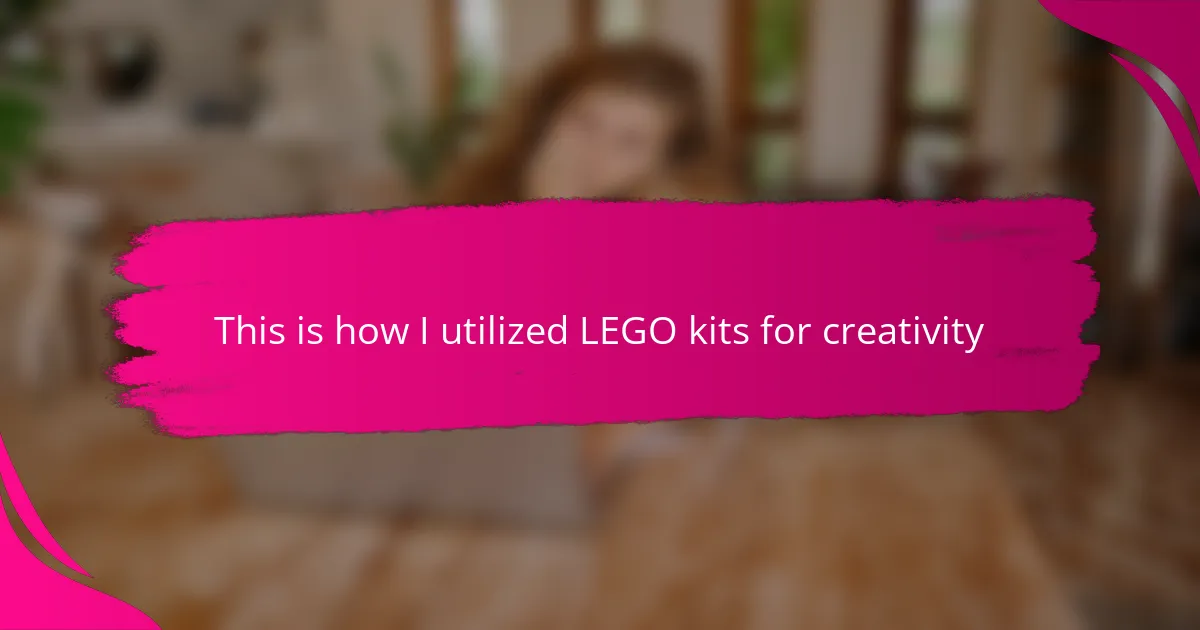Key takeaways
- Creativity in parenting involves flexibility and imagination, enhancing both the parent and child’s growth through open-ended play.
- LEGO kits foster creativity, problem-solving, and essential skills such as focus and fine motor skills, contributing to a child’s confidence.
- Engaging children with age-appropriate and interest-based LEGO kits can make building time more enjoyable and imaginative.
- Incorporating LEGO play into daily routines and encouraging independent problem-solving nurtures creativity and perseverance in children.
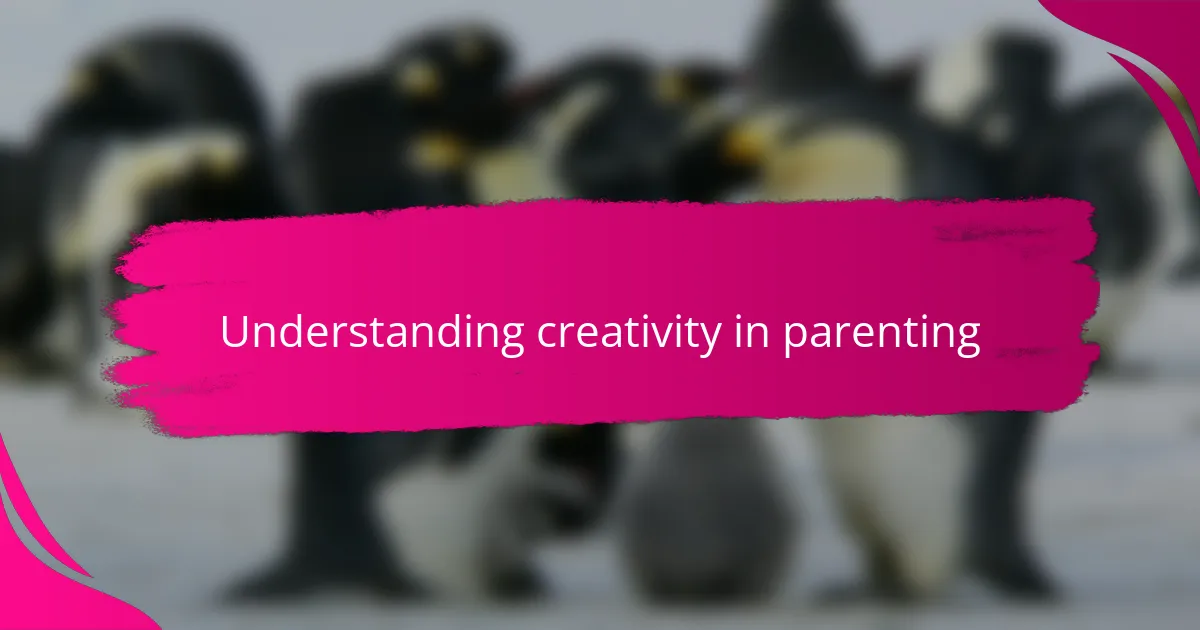
Understanding creativity in parenting
Creativity in parenting isn’t just about encouraging kids to draw or paint; it’s about finding new ways to connect and solve everyday challenges. I remember feeling stuck during a particularly hectic week, and that’s when I realized creativity was more about flexibility and imagination than a perfect craft project.
Have you ever noticed how a simple change in approach can transform your child’s mood or spark their curiosity? For me, these moments are deeply rewarding—they remind me that creativity is as much about attitude as it is about activity.
Understanding this creative mindset helped me see parenting through a fresh lens, where open-ended play and unexpected solutions became tools for growth—not just for my child, but for myself too. It’s a journey filled with discovery, patience, and sometimes, delightful surprises.
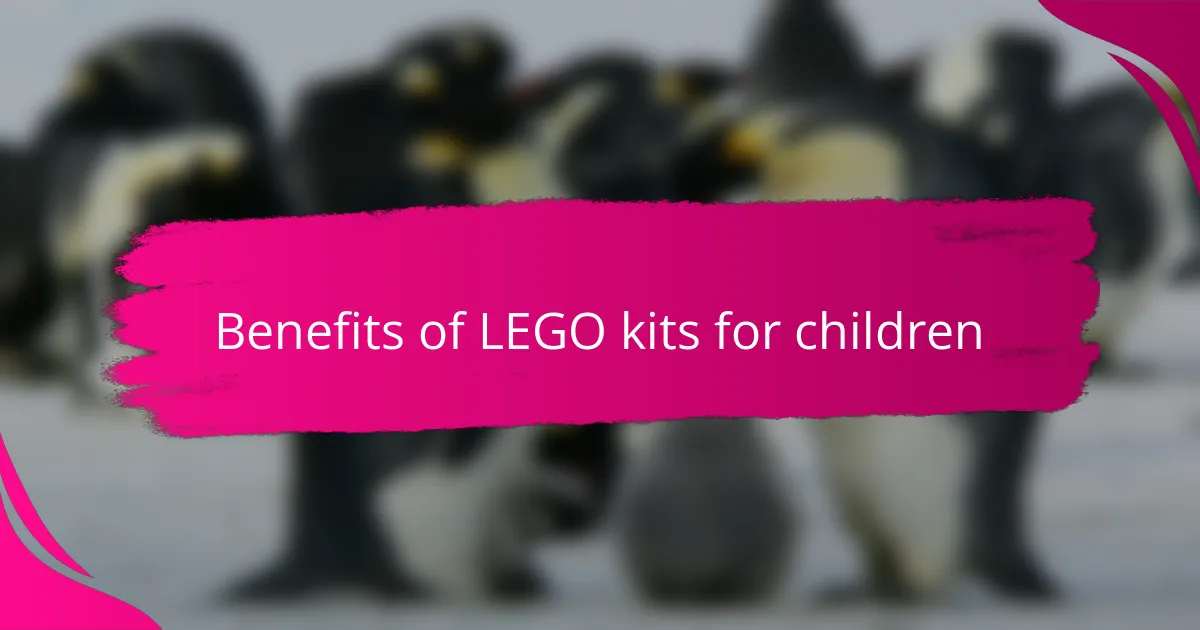
Benefits of LEGO kits for children
LEGO kits have been a game-changer for my child’s creative development. When they sit down with those colorful bricks, it’s not just about building towers; it’s about imagining new worlds and stories. I’ve watched their confidence grow as they tackle challenges, figuring out how pieces fit together in ways I never expected.
It’s fascinating how these kits encourage problem-solving without any pressure. I often think, how many other toys allow kids to experiment freely, fail, and try again all on their own? The patience and persistence I’ve seen develop during those building sessions have been incredible to witness firsthand.
Beyond creativity, LEGO play also fosters focus and fine motor skills—I’ve noticed these improvements in my child’s everyday activities, like writing and tying shoelaces. It’s like each tiny brick builds more than a structure; it builds essential skills and self-belief that extend far beyond playtime.

Choosing the right LEGO kits
Choosing the right LEGO kits can really make a difference in how engaged your child becomes. I learned early on that age-appropriate sets, with just the right balance of challenge and possibility, keep my child excited without feeling overwhelmed. Have you ever handed over a complicated kit only to see frustration replace curiosity? That’s a sign to rethink your choice.
I often look for kits that spark my child’s current interests—whether it’s space exploration or animals—because this connection fuels their imagination even more. I remember my son’s eyes lighting up when we found a dinosaur-themed set; it instantly turned building time into storytelling time, which felt like a double win for creativity. It’s amazing how the right theme can draw kids in and make the creative process feel like an adventure.
Sometimes, I purposely choose simpler kits that offer more open-ended building rather than a rigid instruction manual. This freedom has encouraged my child to invent unique creations rather than just follow steps. Have you noticed how kids thrive when given space to experiment? For me, those moments of pure creation, without pressure, have been some of the most rewarding to witness.
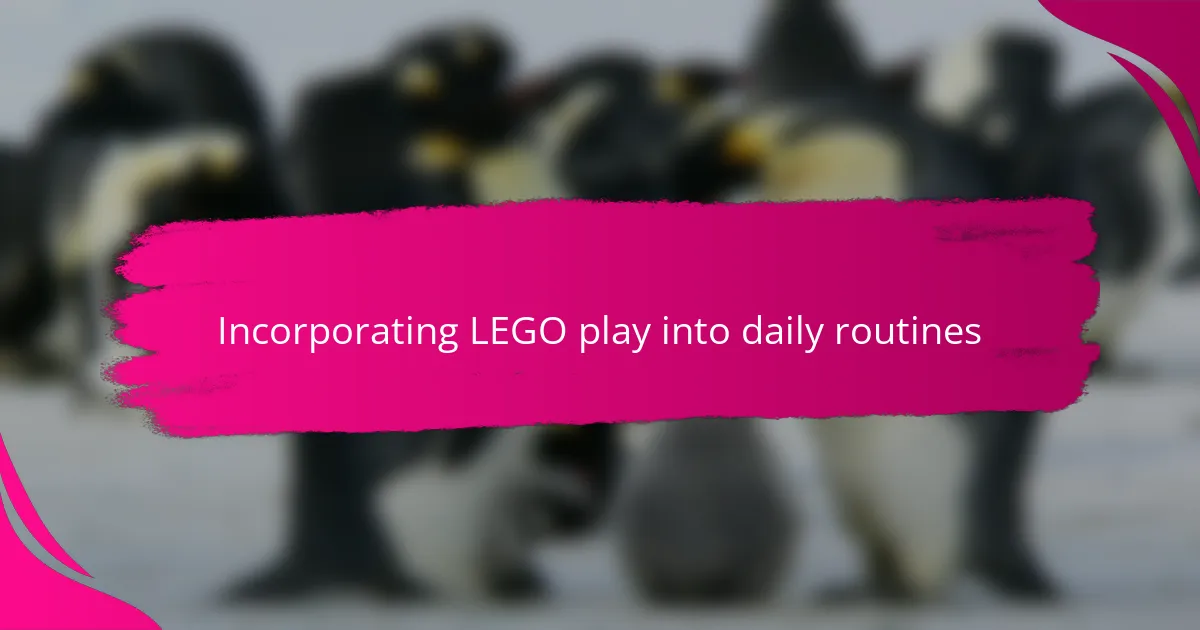
Incorporating LEGO play into daily routines
Incorporating LEGO play into our daily routine became a natural way to carve out creative moments amidst the chaos. I found that setting aside just 15 minutes after dinner for building helped my child unwind and shift their focus from screens to imagination. Have you ever seen how quickly a simple routine turn into a treasured tradition? For us, those brief LEGO sessions became a special time to connect without distractions.
Sometimes, I sneak in LEGO challenges during breakfast or car rides—like asking my child to think about what they’d build next or how they might improve a model. It’s surprising how these quick prompts ignite ideas and keep creativity flowing throughout the day. I often wonder if these small sparks are what truly keep their enthusiasm alive.
What’s worked best for us is blending LEGO play with everyday tasks, making it part of the rhythm rather than a separate event. For example, after tidying up toys, my child loves to rebuild something new from the scattered pieces instead of just cleaning up. This habit encourages them to see potential and creativity in ordinary moments, which I believe is one of the greatest gifts LEGO play has brought into our daily lives.
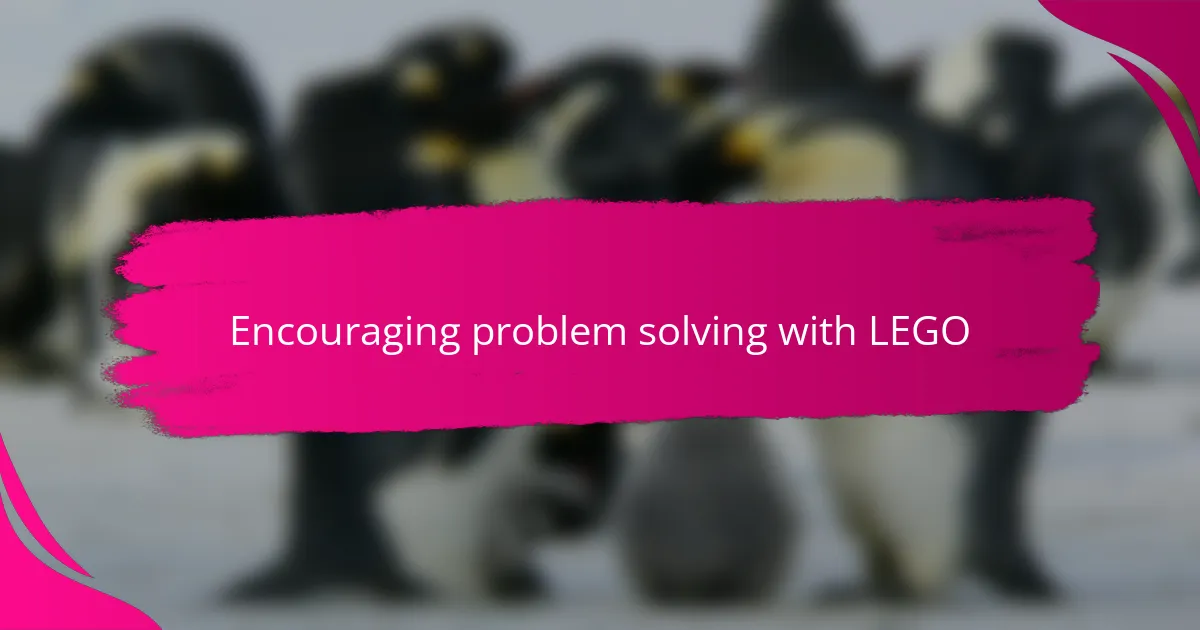
Encouraging problem solving with LEGO
When my child faces a tricky LEGO build, I’ve noticed that instead of stepping in immediately, giving them time to puzzle things out leads to amazing breakthroughs. Have you ever seen a child’s face light up when they finally figure out how to connect two stubborn pieces? It’s those moments that reveal the real power of LEGO in teaching problem-solving.
I often challenge my kid with open-ended prompts like, “How else could you build this?” or “What happens if you change this piece?” These questions don’t just encourage creativity—they nurture flexible thinking. Watching my child test out new ideas, adjust their design, and sometimes start over has been such a rewarding experience.
There was one unforgettable time when a LEGO bridge kept collapsing, and after several tries, my child experimented with different supports until it stood firm. That patience and grit to keep trying until success felt like more than just a play victory—it was a real-life lesson in perseverance. Has LEGO ever turned into a problem that needed real solutions in your home too? For me, it’s clear that these small engineering challenges build big confidence.
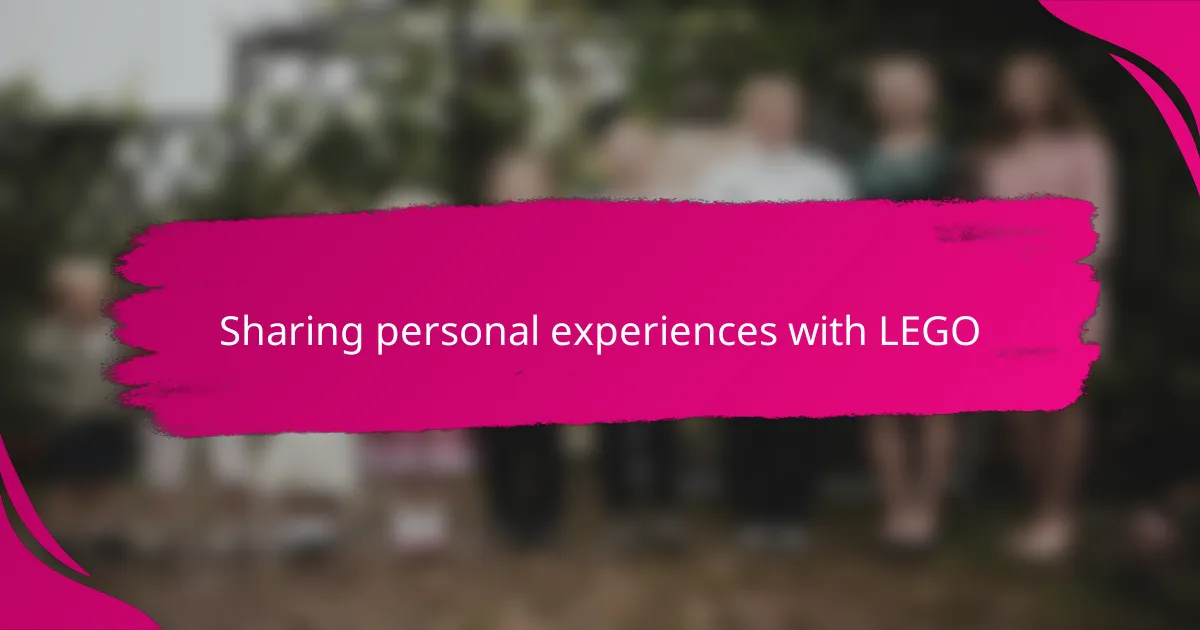
Sharing personal experiences with LEGO
I remember the first time we sat down with a LEGO kit together—it was messy, chaotic, and wonderfully unpredictable. Watching my child’s eyes light up as they pieced together their own little world made me realize how much joy and ownership these tiny bricks bring to creativity.
Have you ever caught yourself marveling at the stories your child invents while building? Some of their creations surprised me, sparking conversations I never expected and revealing layers of imagination I hadn’t known were there. Those moments feel like glimpses into their unique way of thinking.
Sometimes, I find myself learning alongside them, figuring out new building techniques or just laughing at the silly, unexpected shapes that emerge. It’s a shared journey, one that has deepened our bond and reminded me that creativity is as much about connection as it is about construction.
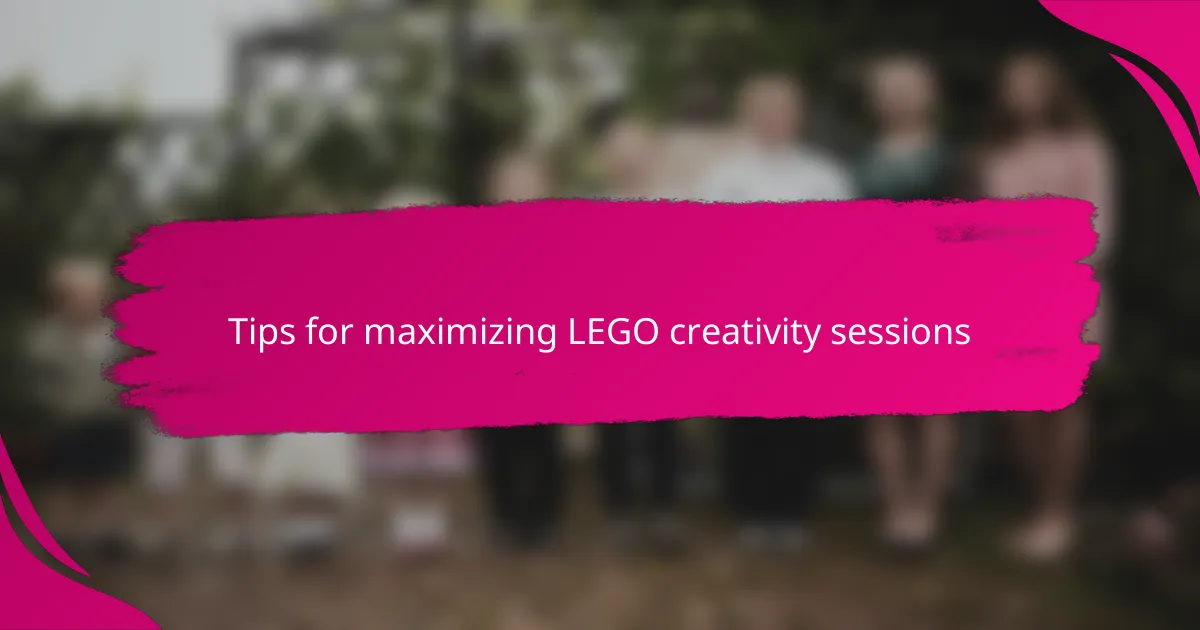
Tips for maximizing LEGO creativity sessions
One thing I’ve found invaluable is creating a distraction-free zone during LEGO sessions. When the TV is off and phones are tucked away, my child’s focus sharpens, and their imagination runs wild. Have you noticed how even small interruptions can break the flow of creativity? For me, protecting that sacred building time has made all the difference.
I also make it a point to celebrate the “invented” things rather than just the finished sets. Sometimes my child builds a spaceship that looks more like a spaceship only to them, but praising the effort and originality keeps their enthusiasm alive. Does your child’s pride in their unique creations ever surprise you? It’s those moments of encouragement that fuel the joy of creating.
Lastly, I like to mix things up by occasionally joining in as a co-builder or challenger. I might say, “Let’s see who can build the tallest tower,” or “Can you create something using only red bricks?” These little prompts spark friendly competition and fresh ideas, and I’ve noticed they push my child’s creativity in ways solo play doesn’t always achieve. Have you tried turning LEGO time into a playful challenge? It can be a fantastic way to keep things exciting.
